Gear Up for a Historic Battle! We Will Help You Choose the Right Fencing Sword
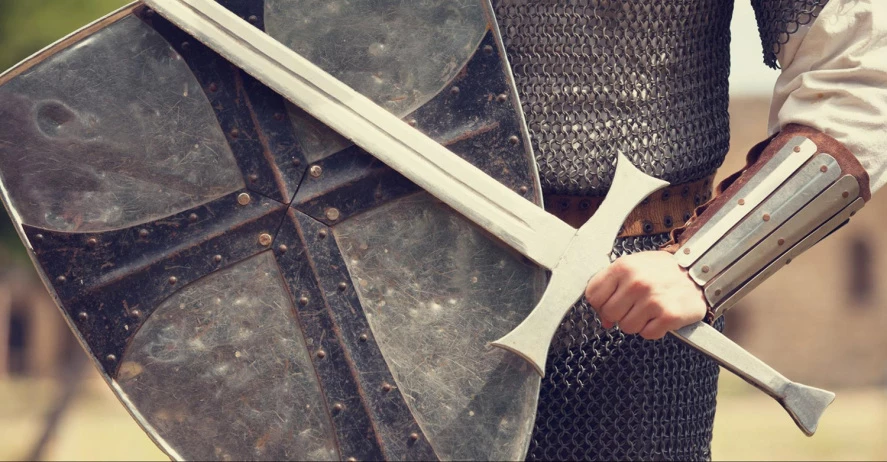
Contents
Before You Charge into Battle...
Fencing swords are no toys. Let’s start with a few practical tips that you should know before you turn into a historical swordsman.
- To practice your fencing skills, you should use light-weight wooden swords.
- After you acquire basic fencing skills, switch to metal swords with blunt blades and rounded tips.
- Your training should be directed by an experienced swordsman.
- Make sure to always handle your sword with care, especially off the battlefield.
- Do not use the sword for self-defense.
If you want to read more about how to use a sword, check out one of our older articles on the topic.
Sword Parts
If you are a skilled swordsman, you probably already know all about your swords. However, for beginners, here is a description of the main parts of a sword.
A sword is made up of a blade, hilt and guard (also called a crossguard). The blade is made of steel and the measuring unit for steel hardness is HRC. The higher the number, the harder the material. Harder materials are less prone to damage upon impact. Depending on the steel, quality blades have a hardness of 50 HRC or more. However, the quality of the blade is also determined by its elasticity, which depends on the heat treatment of the steel.
For safety reasons, manufacturers modify the edge of the blade. Most fencing swords typically come with blunt edges and a rounded tip. However, you can also get a sharp sword, but the organizers of re-enactments and other historical events typically do not allow those for safety reasons.
The part marking the divide between the blade and the hilt is called sword guard.The sword guard protects the hand/arm of the swordsman by shielding the impact of the opponent's blade, and allows the swordsman to increase the penetration force of the blade while stabbing.
The hilt is made of the grip. The length of the grip determines if the sword can be held with one hand, or two hands. The grip usually has a leather cover. Pommel is the part at the end of the hilt. Its main function is improving the balance of the weapon as a whole.
Navigate Through Different Swords with Classes
Our e-shop divides fencing swords into classes A, B, C, D. You will see the class in the product title and description. The classes make it easier to navigate through a wide range of various types, manufacturers and brands.
The division into classes depends on the technology of processing, materials used, quality of craftsmanship and price. What do the classes mean:
Class A
Class A marks the swords with the best blades made of high-quality steel. Perfect balance and high hardness will meet the demands of even the demanding fans of sword fencing. This class is suitable for professionals in sword fencing who expect and require superior performance while maintaining a light weight.
Class B
This class marks swords made mostly in the Czech Republic, where our store is based. It includes swords made of spring steel, which typically have a higher weight and a more robust design. If you need a durable and reliable weapon for a battle re-enactment that will not break easily when hit, this is the class you are looking for.
Class C
Class C swords are made of steel of high quality but lower hardness (compared to Classes A and B). If they are used in fencing against harder blades, it can leave dents on them. These swords have a higher weight and good balance. They are an ideal choice for advanced or intermediate swordsmen.
Class D
Ideal for beginners, who are planning on participating in their first battle. Class D swords are great for practicing combat. The blades are not as hard as the higher classes, and are more easily damaged upon impact against a harder steel.
3 Things to Watch Out For When Choosing a Sword
1. Purpose
Swords for historical fencing are designed for fans of battle re-enactments, LARP events, and similar events. Going to a medieval battle? You might like out selection of medieval swords that will make you stand out of the crowd. Historical events, however, are not just about sword fencing. You might need an armour and other equipment. Not only will you fit into the historical setting of the given event, but you will also be safer.
Do you prefer smaller events with just a couple of friends who share your passion for swords? You still should not forget to bring:
- padded arming cap, chainmail hood, helmet or other head and neck protection,
- leather gloves (at least 1 mm thick) with a cuff over the wrist,
- quilted gambeson covering the entire arms and body down to your thighs,
- full leather shoes.
2. Size and weight
The size and weight of the sword should be adapted to the swordsman's body characteristics, as well as his fencing style. When choosing a historical fencing sword, you should know and respect your arm strength. There is no one-size-fits-all. You should always choose the size and weight that are right for you.
Don't forget that a battle doesn’t last 5 minutes or less, so you will need to wield your sword for pretty long. A beginner swordsman will be better off with a wooden sword. If you want to use the sword in fights, the weight and quality of the blade matter. A good quality sword of reasonable weight will not be cheap. When you decide to get a sword, you should also get a scabbard. Some swords come straight with a scabbard, other swords may require a custom-made scabbard.
Excessively low-weight swords are never good. Beginners tend to choose light weapons to make their life easier, but they shouldn’t. It may sound unlikely but learning sword fencing with a lighter weapon takes more time.
After all, fencing is not about randomly swinging a weapon. It is a sport that requires both slower motion and violent charges. You have to think about several things at once and not exert unnecessary energy. A heavier weapon may seem difficult to handle at first, but don't be fooled. Heavier swords force you to better concentrate on proper movement technique and, in the end, save you more energy than light-weight weapons.
3. Types of Medieval Swords
Swords can be divided by the way they are held into:
- one-handed
- “one-and-a-half-handed”
- two-handed swords
The difference between these types is the way they are held and the length of the grip (hilt). Two-handed and one-and-a-half-handed swords are held with two hands, while the grip of one-handed swords is designed for one hand only.
A one-handed sword allows for a more dynamic fight with quick and effective strikes. It is lighter and requires less strength and energy. With a sword in one hand, you can easily hold a shield in the other one, improving your defence.
Handling a one-and-a-half-handed sword already requires some prior fencing experience. You can choose to hold the weapon in both hands, which gives you better grip and control over the weapon. If needed, you can swap the sword into one hand and use the other hand to hit your opponent.
With a two-handed sword, you have the advantage of a higher range. On the other hand - quite literally - you have more work to do! Lifting and swaying a long and heavy sword will make you break a sweat. The two-handed grip improves the impact and accuracy of your cutting and stabbing attacks with greater impact and accuracy. But it should be noted that many two-handed swords had a ceremonial function and were used in fights rather rarely.
Sword Accessories
To better experience what it was like to be a medieval swordsman, get additional accessories for your sword. Sword hangers for your belt are great for carrying your sword into a battle. When the battle is over, you might need a suitable bag to carry your sword home.
When the battle is over, there is no need to put your sword away in the closet. You can find a worthy place in your home to display your sword to visitors. With a wall holder, your sword will continue to shine in the world! You can also display sharp swords that you don't use for fighting in historical events.
Last but not least, consider getting some tools for sword maintenance to increase the durability of your weapon.

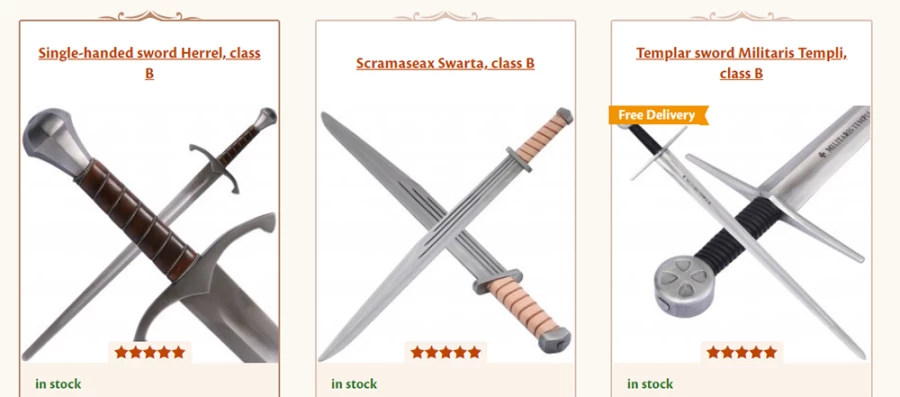
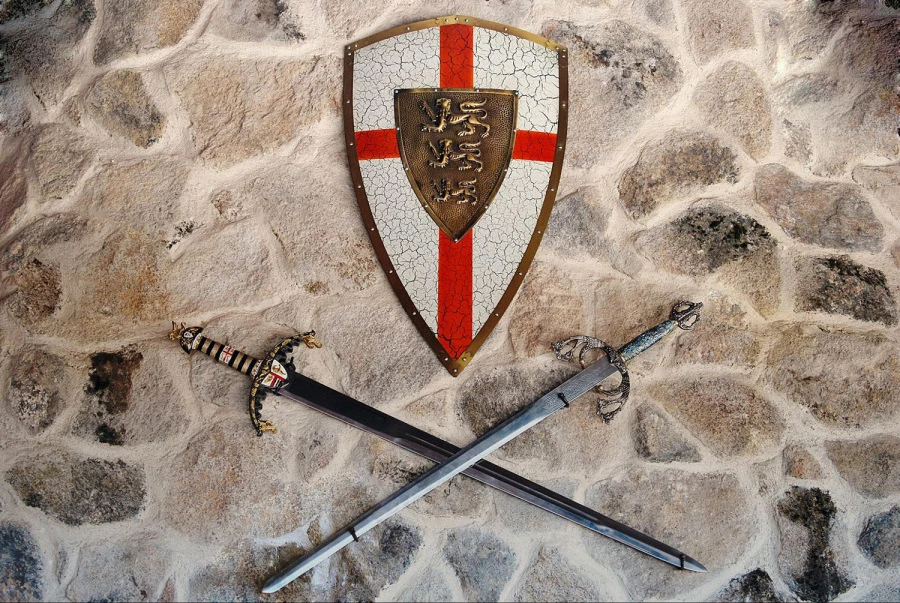
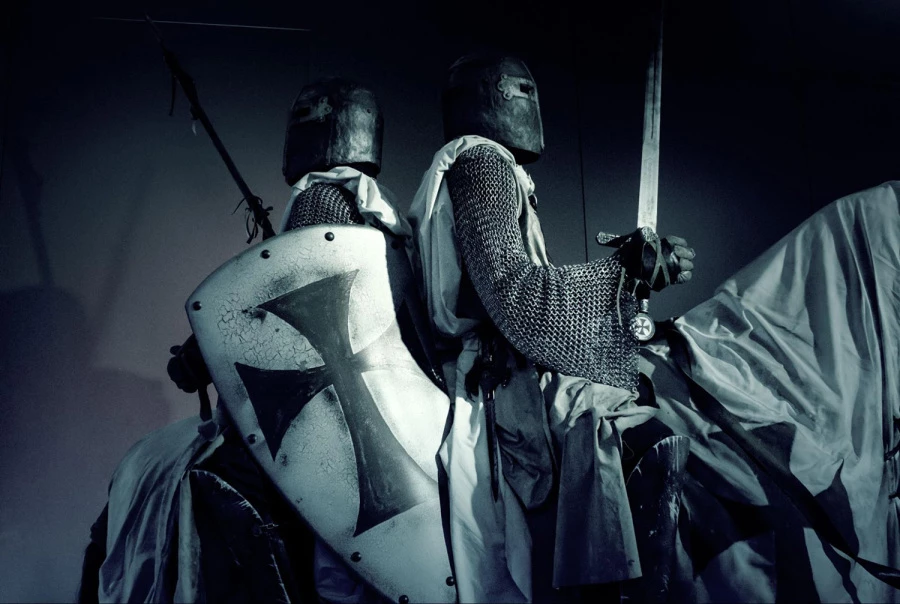
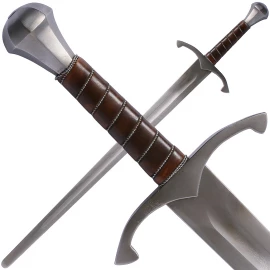
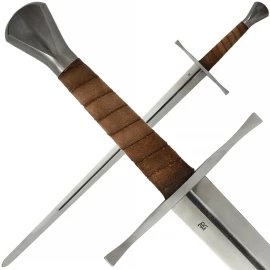
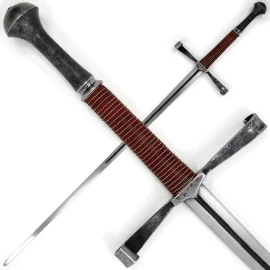
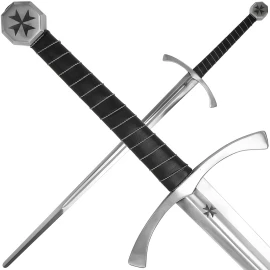
Comments